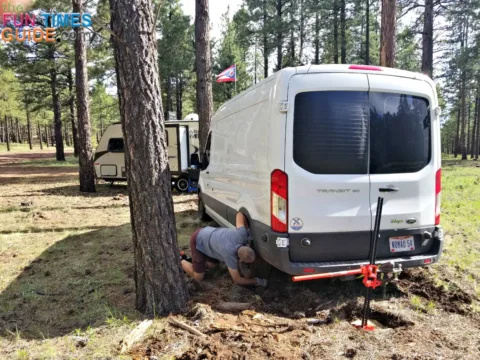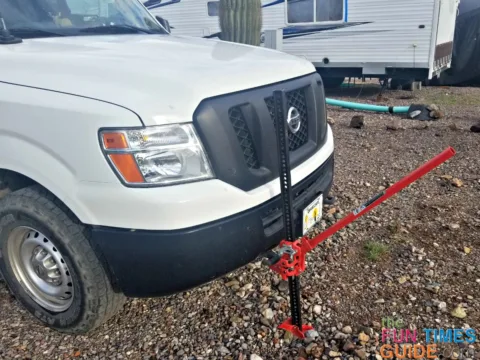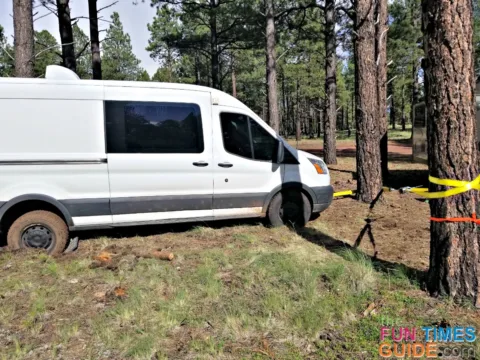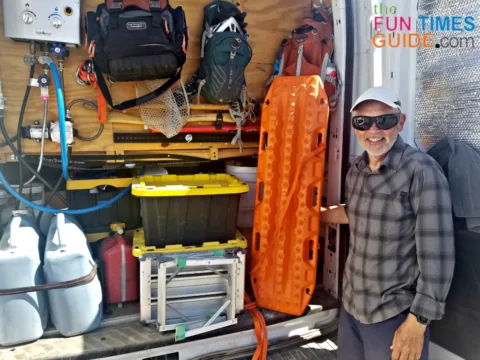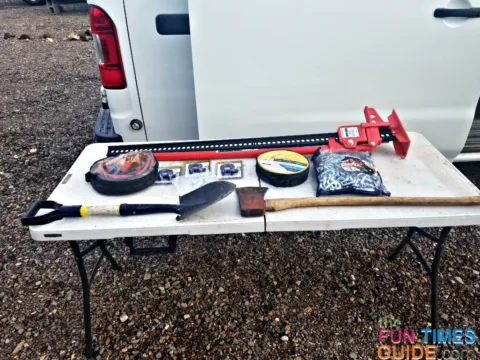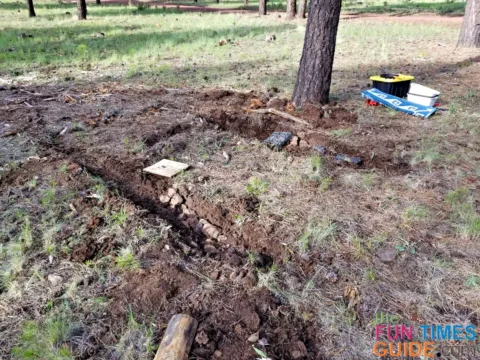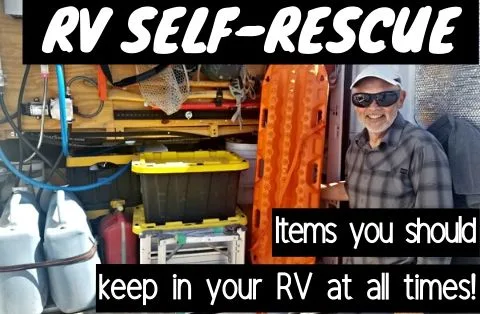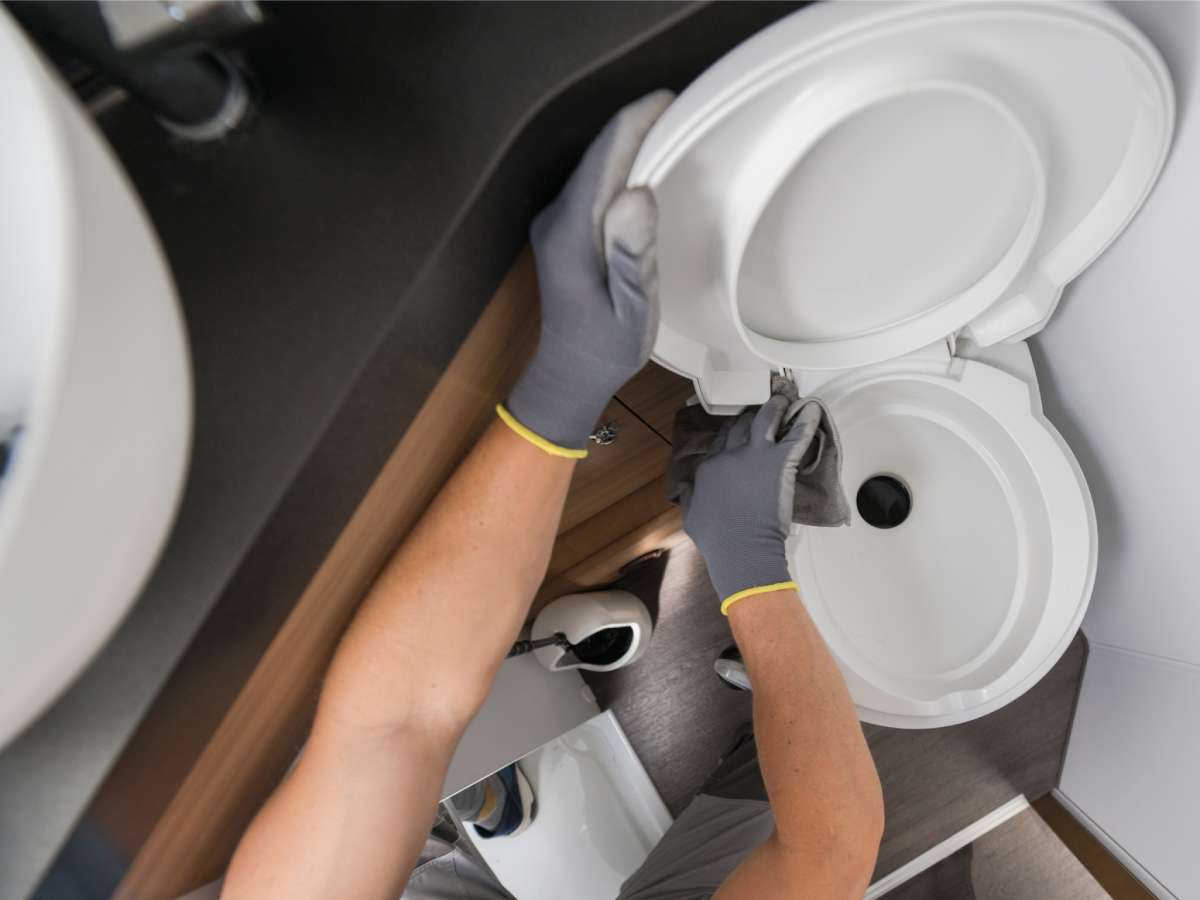Sooner or later, every RVer will make the mistake of turning down a road or path that won’t support their rig. Here’s what to do if you find your RV stuck in mud, sand, grass, or ruts.
With the popularity of smaller RVs and converted vans, the desire to explore more remote camping locations makes the chance of getting stuck a real danger.
My wake-up call came about a year ago…
My traveling friend and I had been camped for a week or so during the monsoon season of Arizona. What was firm ground when we arrived had become soft and spongy by the time we started to leave. When he attempted to turn around off the packed campsite, his van immediately sank almost down to the axles!
With little in the way of rescue equipment on hand, we headed into town in my van to purchase some tools to save the expense of calling a tow truck to get his vehicle unstuck.
Here are some good tips that I’ve learned firsthand can help you get out of a bad situation when your RV is stuck…
RV Self-Rescue Tips
#1 – If at all possible, never travel into questionable areas without a second vehicle. Even a car you may be towing behind your RV could be used to go find parts, transport equipment, or get help.
#2 – Always carry a Hi-Lift Jack. By lifting from the frame of your van/RV you will avoid damage to the steering or suspension parts. You will also be able to lift higher — allowing stones or wood to be placed underneath the tires to lift you out of the rut or hole. A Hi-Lift Jack can also be used as a winch to pull you ahead a foot or two, when attached to your RV and a tree.
This video shows a DIY winch for self-rescue:
#3 – A heavy-duty winch mounted on either end of your van/RV is a great addition to help pull yourself out. A secondary idea is a good cable puller (aka come along) which is often enough to help roll you out of a hole. Remember, using a snatch block will cut the load weight you are pulling in half.
#4 – Carry nylon straps, shackles, and chains to help protect any trees you may be using as an anchor.
#5 – MaxTrax traction mats placed under your drive tires can provide the needed traction to get yourself out.
This video shows how MaxTrax traction mats work:
#6 – Always have a good shovel and axe with you to help dig out your wheels and scavenge wood or rocks to fill the ruts.
#7 – Truck Claws are another strap on traction device that can help you get out of soft ground.
This video shows how Truck Claws work:
#8 – Larger RVs often have hydraulic leveling jacks which can be used to lift the RV high enough to fill tire ruts with rocks or timbers to aid in self-rescue when you have a stuck RV. (I like this hydraulic bottle jack and these leveling scissor jacks.)
#9 – Four-wheel drive is becoming an option on vans and even RVs. Just remember to reserve the extra traction that’s provided by a 4×4 system to get yourself out rather than getting yourself further into places you shouldn’t be.
Off-Road RV Assistance
Most RV roadside assistance packages that provide towing have restrictions that will leave you high and dry when it comes to off-road rescue.
They have limitations as to how far from blacktop they can travel, and the amount of time allotted to complete a job.
Most off-road rescue services come under the heading of vehicle recovery — and the cost can quickly climb into the thousands of dollars.
My best advice is to carefully inspect any even slightly risky location before taking a chance and driving your RV there.
But also, be well-prepared so that you can get yourself out of a jam when the unexpected happens and you have a stuck RV on your hands.
Things tend to go wrong at the worst possible times and in the worst possible locations.
In our situation, my friend’s van was only 3 feet from a tree in front, and 150 feet from the nearest tree behind. It made for a very strenuous afternoon of lifting and hand-winching for us to get his van back on solid ground.
Here’s my video to give you a better idea of exactly what I carry with me in my RV:
Like this post? Save it to read again later… or share with others on Pinterest!

